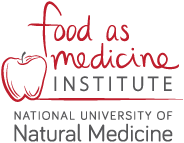
Have you ever wondered what keeps your body running so seamlessly behind the scenes? It comes down to your hormones. Hormones are your body’s chemical messengers. They control everything from energy and mood to metabolism, sleep, and fertility. And fat fiber and micronutrients help promote hormone health.
Our current diet and lifestyle can lead to hormone imbalances. This can look like fatigue, weight changes, PMS, stress, and/or sleep issues in our bodies. Nutrition is one of the most powerful and overlooked ways to support healthy hormone production and function.
Here we explore how three key dietary components: fats, fiber, and micronutrients, work together to support hormone health.
Healthy Fats: The Building Blocks of Hormones
Our hormones are made from fat. Cholesterol and essential fatty acids create the structural backbone for steroid hormones like estrogen, progesterone, cortisol, and testosterone. Without the right kinds of fats, our bodies struggle to make and regulate these key chemical messengers.
Healthy fats also help stabilize blood sugar, lower inflammation, and improve cell membrane health.
There are three main healthy fats that support hormones:
- Omega-3 fatty acids found in salmon and other fatty fish, flax, chia, and walnuts help reduce inflammation, support hormone synthesis (like brain and reproductive hormones), and regulate hormones like cortisol.
- Monounsaturated fats such as olive oil, avocados, and nuts, promote insulin sensitivity and cardiovascular health and hormone receptor health.
- Saturated fats (in moderation) including coconut oil, ghee, and eggs, provide crucial cholesterol for hormone synthesis and cell structure.
Diets rich in omega-3s and monounsaturated fats are linked to improved menstrual regularity, lower inflammation, and better stress response. Trans fats and highly processed, refined oils like soybean, corn, and canola can increase bad cholesterol and lower good cholesterol, which disrupts hormone signaling and increases inflammation.
Fiber: The Detox and Balance Agent
Fiber plays a surprising role in hormone regulation, especially with insulin and estrogen.
- Estrogen balance: Fiber helps the body eliminate excess estrogen through the digestive tract. Soluble fiber binds to estrogen in the liver and carries it out through the stool, preventing reabsorption.
- Gut health: A healthy microbiome is key for hormone metabolism. The gut’s “estrobolome” (the collection of bacteria that process estrogen) helps maintain healthy hormone levels.
- Blood sugar balance: Fiber slows glucose absorption, preventing sharp spikes and crashes in blood sugar that can affect insulin, cortisol, and sex hormones.
Research suggests that eating a high-fiber diet has been shown to lower circulating estrogen and improve insulin sensitivity, reducing risk of hormone-related conditions such breast cancer and PCOS.
To experience these benefits, it’s important to include a variety of fiber sources in your diet. Some of the best sources of hormone-supportive fiber are:
- Cruciferous Vegetables like broccoli, brussels sprouts, leafy greens support liver detox and pathways for clearing estrogen.
- Whole grains such as quinoa, oats, and barley support steady glucose, blood sugar, and improve insulin control.
- Seeds and legumes including flax, chia, lentils and beans have both insoluble and soluble fiber, plus plant compounds like phytoestrogens that support estrogen balance.
Micronutrients: Small but Mighty Regulators
While macronutrients (carbs, fats, proteins) provide energy, micronutrients such as vitamins and minerals act as catalysts. They help enzymes synthesize, convert, and regulate hormones. Even mild deficiencies can disrupt hormonal signaling.
Key micronutrients for hormone health:
- Magnesium: Regulates cortisol, supports thyroid function. It’s also important for insulin sensitivity and sleep, two hormone regulators.
- Zinc: Essential for sex hormone production (testosterone, estrogen, progesterone), fertility, and supports thyroid and immune function.
- B vitamins (especially B6, B12, folate): Support estrogen metabolism, energy production, and neurotransmitter synthesis. B6 specifically helps convert estrogen into less active forms, reducing PMS symptoms.
- Vitamin D: Functions like a hormone and regulates insulin, mood, and reproductive health. Low levels are linked with PCOS, and supplementation has improved PCOS symptoms.
- Selenium, iodine, and iron: All three are crucial for thyroid hormone (TSH) stimulation, triggering thyroid synthesis, and metabolism.
Deficiencies in micronutrients such as zinc, vitamin D, and magnesium are linked to menstrual irregularities, thyroid dysfunction, and stress-related hormonal imbalances.
The Interconnection: How Fat, Fiber, and Micronutrients Work Together
Proper hormone function isn’t just about one nutrient; it’s about how they all work together. Together, they maintain stable blood sugar, reduce inflammation, and optimize hormone production. A balanced, nutrient-dense diet with a mix of healthy fats, high-fiber foods, and key vitamins/minerals supports long-term hormonal resilience.
How to use foods and lifestyle to support hormone health:
- Build balanced meals with protein, fat and fiber including eggs, avocado, salmon and nuts, and cruciferous vegetables.
- Prioritize variety by using different oils and fibers to support gut health.
- Make sure you’re eating your minerals by adding dark chocolate or pumpkin seeds (Magnesium), chickpeas and cashews (zinc), and Brazil nuts or eggs (selenium) to your menu.
- Support your liver and gut by drinking plenty of water, and eating high-fiber foods and fermented foods to balance your gut microbiome.
- Make sure you sleep at least 7-9 hours and manage stress, both of which play a crucial role in hormone regulation and metabolism.
Takeaway: Nourishing Your Hormones Naturally
Healthy hormonal function starts with nourishment. By eating whole, nutrient-rich foods that support your body’s natural rhythms, you can improve energy, mood, and long-term health, one meal at a time.
Healthy fats provide the building blocks for hormone production, fiber clears excess hormones and keeps digestion running smoothly, and micronutrients fine-tune every step of the process.
Small daily choices, from adding flax to your smoothie to swapping refined oils for olive oil, can make a measurable difference in your hormonal health over time.

